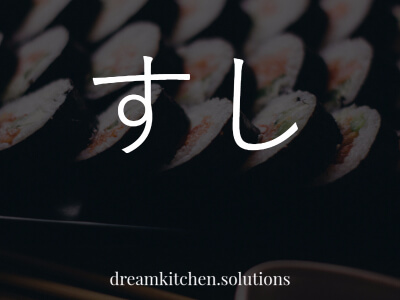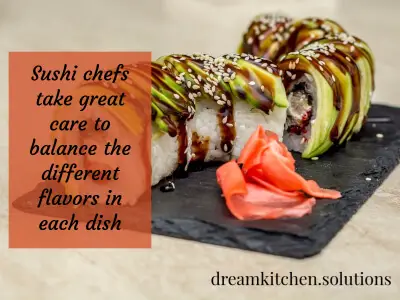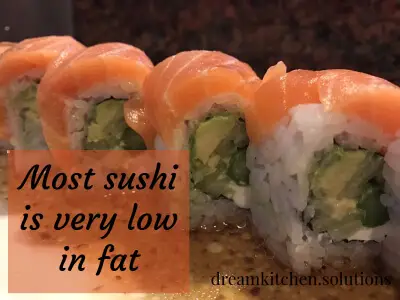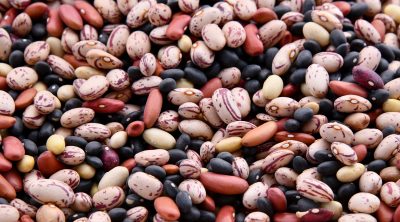Sushi could, perhaps, be considered the world’s first example of nouvelle cuisine, where the focus is as much about how food looks as how it tastes. From the freshest ingredients to the exact angle of placement on a diner’s plate, there is far more to sushi than the supermarket snack boxes we’re familiar with in the West.
In Japan, sushi making is an art, and one which a good sushi chef will dedicate their life to mastering.
Spending ten years as a trainee, or apprentice – doing everything that a top-class restaurant requires other than preparing or serving food – Japanese sushi chefs learn to appreciate the impact that small, seemingly insignificant things can have, both on the food itself and on the ambience and experience associated with their restaurant.

Many Westerners may be surprised at the length of time a sushi chef will spend doing “trivial” tasks – accompanying the master chef to the fish markets, cleaning the restaurant, serving tea or sake to customers – before even beginning to experience the “proper” work of their vocation.
To the Japanese, however, this slow, patient dedication and progress to an eventual end goal is a natural part of their culture and way of life. Japanese people believe that, in order to excel at the larger, more important aspects of life, you first have to master the smaller, seemingly insignificant parts.
Perhaps the West would do well to apply that principle; excellence, after all, is very nearly bomb proof, surviving both economic setbacks and natural disasters with relative calm.
Contents
- Japan: A Climate for Sushi
- Sushi in the Shadow of Fukushima
- Why Sushi?
- What Does Sushi Mean in Japanese/English?
- What Is Sushi Wrapped In?
- What Is A Sushi Chef Called?
- What Does Sushi Grade Fish Mean?
- What Does Sushi Taste Like?
- Can Sushi Be Cooked?
- Can Sushi Be Frozen?
- Is Sushi Healthy?
- Can Sushi Make You Fat?
- Can Sushi Make You Sick/Can Sushi Give You Worms?
- Which Sushi Is Safe During Pregnancy?
Japan: A Climate for Sushi
Japan is surrounded by ocean. Owing to interactions between adjacent bodies of water around the island nation, Japan’s coastal waters are by turns warm and cool, enabling a diverse range of fish and sea creatures to live and thrive there.

These, in turn, ensure a vast array of potential ingredients, both to create new and better styles of sushi alongside the traditional offerings, and to satisfy the palates of a range of diners, from tourists with very limited exposure to sushi, through to Japanese dignitaries and celebrities, who know how good sushi should look and taste, and who are not afraid to challenge a sushi chef if their expectations are not met.
Sushi in the Shadow of Fukushima
The most catastrophic event to hit Japan in recent history was the explosion at the Fukushima nuclear plant and the resulting radioactive spill, which included radiation leakage into the coastal waters – an environmental crisis which is still ongoing.
However, Japan’s sushi industry has survived the legacy of Fukushima so far. The Japanese government continues full, thorough, and transparent radiation testing on fish, which ensures the confidence of both chefs and diners is maintained.
In addition, the extensive apprenticeship that sushi chefs serve in Japan mean that individual chefs are very skilled in spotting fish that is not in peak condition, often from a single glance.
The main impact of Fukushima on Japan’s sushi industry was, in fact, in the supply of sushi rice, much of which was previously grown on paddies around Fukushima, rather than on fish and other seafood.
As well as a government that is committed to the resilience, welfare, and success of its country and its people, Japan’s practice of long, in-depth apprenticeships for sushi chefs has probably gone a long way towards ensuring that the industry survived in the aftermath of Fukushima: full and deep knowledge is a remarkably calming thing to have, whatever your focus.
Why Sushi?
Sushi offers all the nutrition of a complete meal – protein, carbohydrates, vegetables, digestive assistance – in bite sized pieces. This makes sushi an ideal lunch, whether in the familiar Western ‘snack pack’, or at the more traditional Japanese sushi bar, where service is prompt, yet professsional.
Fish is a good source of lean protein, and ideal for those who want to avoid farmed meat for any reason: in Japan, fish is caught fresh each day, rather than being raised in farms, as is often the case in the West.
If you don’t happen to live in Japan, however, don’t worry: you can still find ethically sourced fish for your sushi. If you live within travelling distance of a coastal town, there will often be smoke houses or fish stalls where you can not only buy fish caught that day, but also benefit from the fish seller’s knowledge of which stocks have the strongest populations, and are therefore most sustainable.

If you’re reliant on supermarkets, look for wild salmon and line-caught tuna, and research sustainable fish species prior to your shop, so you can ask for specific fish, if your supermarket has a fresh fish counter.
Remember: the talent of a Japanese sushi chef is their ability to work with whatever is brought to them on a given day: never be afraid of trying a fish that’s new to you, or taking advantage of a ‘seaonal special.’ Good sushi isn’t about repetition: it’s about perfection through innovation.
As well as being a healthy, complete light meal on its own, sushi is also a fun addition to a wider dinner party menu: why not start with a seafood soup, such as clam chowder, follow with a selection of sushi rolls, enjoy a fish-based main course, and round the evening off with a light, fruity dessert?
What Does Sushi Mean in Japanese/English?
In English, the word sushi just means “sushi.” Derrr… But in Japanese, it means something else!

Many Westerners erroneously assume that the word sushi is synonymous with raw fish or raw seafood. But in Japanese, the word sushi is actually translated as “sour taste” or “it’s sour.”
The word refers to the rice which is flavored with vinegar, rather than to the fish or other toppings that are usually paired with it.
There are many varieties of sushi, but few of them are made with raw fish. Most sushi is actually made with cooked seafood, raw or cooked vegetables and some other cooked foods such as beef, chicken or scrambled egg.
Some people even love their sushi made with Spam or hot dogs, but who are we to judge? Don’t knock it til you try it!
What Is Sushi Wrapped In?
Some sushi is wrapped up in a sheet of thinly sliced and pressed seaweed called nori. Not all sushi varieties are wrapped in nori, but the large hand rolls and the many types of maki – sliced sushi rolls – are wrapped with it. Dried seaweed might sound unappetizing to many Americans, but it’s actually very tasty.
Nori is usually roasted with a touch of oil and salt added to bring out the flavor, and the texture adds a nice little crunch to your sushi roll, as long as it hasn’t been sitting out too long.
If you’re eating at one of those trendy sushi joints with the conveyor belt that hauls little plates of sushi around the dining room, don’t feel that you must grab one off the line. If the kids want to grab their own that way, it’s fine. Let them have their fun.
But who knows how long those things have been parading their way around the room? Instead, ask your server to make some fresh sushi for you – that way you won’t end up with soggy nori.
What Is A Sushi Chef Called?
The Japanese term for a sushi chef is Itamae, which basically means “sushi master.” A traditionally-trained sushi chef trains for close to a decade to become a master of his craft.
As you probably noticed the first time you laid your eyes on a plate of sushi, this isn’t just a type of food – sushi is a form of art, and it’s taken very seriously.
Presentation is extremely important in traditional sushi restaurants, not only in how the sushi itself is put together, but also in how it is presented on the plate with the various sauces and condiments dotting and swirling around the plate as well.
Sushi is kind of a big deal all around the world, and dining at a quality sushi restaurant is a delight to the senses. Most sushi lovers spend just as much time taking pictures of their food as they do eating it – with no Snapchat filters needed! Sushi is pretty gorgeous as-is.
What Does Sushi Grade Fish Mean?
The subject of whether fish is “sushi grade” or not is a little tricky. Technically, there aren’t any standard regulations for the use of the term, but fishmongers and sushi restaurants don’t want their customers to get sick and sue them, so they do take some precautions and aren’t likely to throw the term around lightly.
Sushi grade fish refers to the highest-quality fish available that is most likely to be safe for raw consumption. Sushi grade fish should be handled and stored separately from other fish, with cutting boards, knives and gloves sanitized between uses to prevent cross-contamination.
Some fish, like salmon, should be frozen at -4 degrees Fahrenheit (-20 Celsius) for a full week to kill off any parasites that might be lurking in the flesh of the fish.
Always remember that there are no guarantees when it comes to eating raw meats, fish and seafood. While sushi restaurants and their suppliers go to great lengths to provide fresh seafood that is safe for human consumption, there is always a chance of harmful microorganisms being in raw fish.
The USFDA recommends that all meat and seafood be cooked thoroughly before consumption to reduce the risk of food-borne illnesses.
What Does Sushi Taste Like?
Although sushi rice is flavored with vinegar and literally means “sour taste,” the rice itself is not usually very sour by Western standards. In fact, most sushi rice that you get at restaurants is actually a little sweet to the taste.
But the primary flavor of sushi is determined by the toppings that come along with the rice.

There are tons of meats and veggies that are made into sushi – some are cooked and others are raw. These ingredients will determine the overall flavor of your sushi.
Many sushi chefs take great care to balance the different flavors in each dish with a variety of spices and sauces, so many sushi items will have a delightful combination of sweet, sour, salty, spicy and savory bursts of flavor in each bite.
Can Sushi Be Cooked?
Oh yes, sushi can be cooked. In fact, most sushi is made with cooked ingredients. There are simple varieties that are made with nothing more than rice, a single topping and a strip of nori, while others might contain over a dozen ingredients.
And while most sushi has traditionally been served chilled, you can often get deep-fried sushi rolls nowadays that are piping hot and super delicious!
Be careful, though, as the calories can pile up quickly with the fried sushi rolls. They’re surprisingly filling, so you might want to try just one or two deep-fried sushi rolls at a time and share them with your party rather than everybody ordering a bunch of rolls at once.
Can Sushi Be Frozen?
Yuck. No. Just. Don’t.
Sushi – or any white rice dish, for that matter – does not taste very good after it’s been frozen. The fish all just turns to mush when you thaw it, and the rice gets hard, so don’t even go there.
It’s better to just stuff your happy little face at the sushi bar than to freeze the leftovers and eat them later on. The discomfort of waddling out of the restaurant with a stuffed tummy is nothing compared to the torture of eating 2-week old sushi that has been frozen and then thawed.
But sushi leftovers can be refrigerated. They’re not nearly as good refrigerated as they would be when eaten fresh, but refrigerated sushi is still edible. Just be sure to seal them tightly in a Ziploc baggy to keep the rice from becoming too dried out and from hardening up.
Is Sushi Healthy?
Overall, sushi is much healthier than most of the foods that make up the standard American diet.
Most sushi is prepared with fresh seafood, meats and vegetables and is naturally low in fat and moderate in protein and calories with a decent amount of fiber – along with an assortment of vitamins and minerals.
In general, the more colors of the rainbow that you see on your plate, the more nutrients that will be packed into every bite.
Sushi made with salmon or avocado contains heart-healthy fats, and many sushi varieties also contain a wide variety of veggies in a single serving. Carrots, zucchini, mushrooms, seaweed, radishes and sprouts are just some of the healthy vegetable ingredients typically used to make sushi.
Steamed soybeans or edamame are another healthy favorite at sushi restaurants, and the green tea often served at sushi places is loaded with antioxidants.
Can Sushi Make You Fat?
Everything can make you fat. It all depends on how much you eat compared to how much your body needs for energy throughout the day.
As far as macros go, most sushi is very low in fat, except for the ones that contain fried meats, salmon, tempura veggies, avocado or mayonnaise.

The varieties that are made primarily with fresh vegetables such as cucumber, pickled radish and seaweed are fairly low in calories too and are a good choice for those who are counting calories.
But remember that while seafood is often low in fat, all shellfish is loaded with cholesterol, and all animal products contain cholesterol while plant-based foods are cholesterol-free.
So as long as you enjoy your sushi in moderation, you shouldn’t have to worry about gaining weight from the occasional trip to the sushi bar.
Can Sushi Make You Sick/Can Sushi Give You Worms?
First, keep in mind that most sushi is thoroughly cooked and is very safe for consumption. But as mentioned above in the section about sushi grade fish, there are no guarantees when it comes to eating raw fish, so there’s always a chance of contracting a food-borne illness when eating raw fish.
But it’s also always possible to get sick eating cooked foods, even though it doesn’t happen often.
Restaurants and food suppliers take precautions to minimize the risks, but there’s always a chance of some kind of food poisoning, whether you eat at a restaurant or at home, whether you eat raw foods or cooked ones.
This is even true of vegetables and fruits, as there have been rare cases of people contracting salmonella from eating veggies. It’s crazy, but it’s true.
The bottom line is that sushi restaurants go to great lengths to ensure your safety. You’re their customer! They love you!
As for worms, certain species of salmon are more likely than others to contain some kind of worm parasites. That’s why they’re typically flash-frozen immediately after being caught and are frozen for seven days or longer to kill the parasites.
It is not recommended, however, to eat sushi leftovers containing raw fish, as raw fish spoils very quickly, even when refrigerated. It’s always best to keep sushi leftovers refrigerated and to consume them right away to prevent health problems.
Which Sushi Is Safe During Pregnancy?
Some interesting studies from the University of Bristol and the Federal University of Rio de Janeiro suggest that pregnant women who ate fish two to three times per week reported 53 percent less symptoms of anxiety.
And in Japan, researchers recommend fish as part of their neonatal treatments for expecting moms. So there’s good evidence that eating fish is good for your health – even during pregnancy.
But since consumption of raw fish always presents greater risks than eating cooked fish, it’s probably best to play it safe and just stick with the cooked varieties of sushi during pregnancy.
Again, sushi restaurants take great precautions to prevent food illnesses, but if you have any doubts or just want to reduce the risk of contracting food illnesses for you and your baby, then stick with the cooked sushi and the vegetable options. There are tons of sushi items on the menu that don’t have raw seafood, so chow down.
And make sure to choke down an extra hand roll for the little guy!






